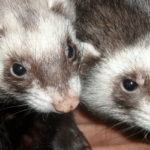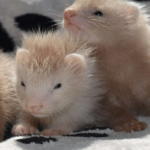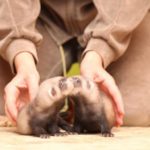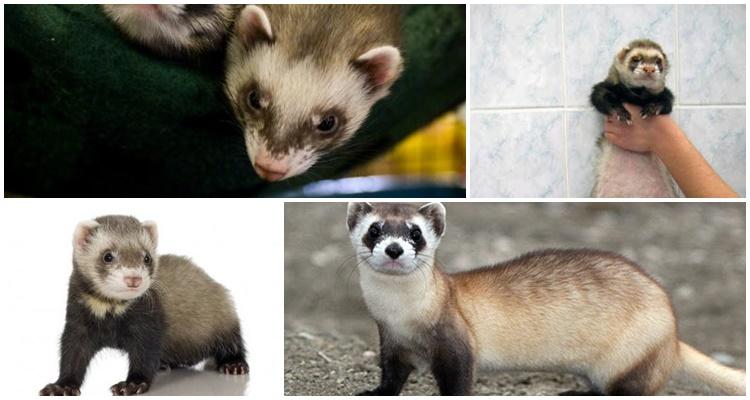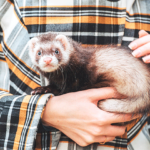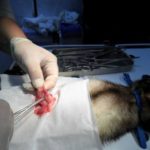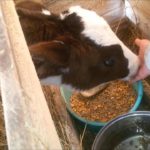Breeding any animal is a complex and responsible matter that must be approached with the utmost attention. Preparation will require extensive and varied preparation, because we are talking about the health of ferrets and future offspring. Before you start breeding domestic ferrets or ferrets, furos, you need to assess in advance all the upcoming difficulties, as well as the need to “place” the future offspring in good hands.
Matching
Breeding ferrets at home is somewhat different from mating in nurseries, where 5-6 females are “assigned” to one male. At home, owners try to select a pair for their pets according to the following principles:
- Coat color. To produce offspring, it is better if the parents have the same coat color, otherwise you may get undesirable effects.
- Flexible character. If in a pair one of the ferrets or both parents have an aggressive, unpeaceful, quarrelsome disposition, there is a chance that such negative traits will be passed on to the offspring.
- Health. This is very important, especially for the female, since she will have to bear, give birth and feed strong and healthy offspring.
- Acceptance of a male by a female. Selectivity is present in these animals; a female or a male may react negatively to the proposed pair, which in some cases forces them to change ferrets that were previously selected for breeding based on other parameters.
Female ferrets are good mothers. They take care of the offspring and can even accept other people's puppies left without a wet nurse.
How do you know when it's mating time?
Ferrets reach maturity at 7-12 months, sexual activity of males lasts up to 5 years, females can give birth for 3-4 years. The sexual cycle lasts from March to September and is associated with an increase in daylight hours.
For the female
The onset of estrus in a ferret is determined by changes in the size and color of the external genital organ, which is called the loop. It gradually fills up, increases in size, first becomes pink, then turns red. Discharge appears from the loop, facilitating sexual intercourse. If the secretion is transparent and does not have an unpleasant odor, everything is in order with the animal’s health.If the discharge is cloudy, serous, purulent, or smells bad, the animal has an infection and should be shown to a veterinarian immediately. Such an animal cannot be mated.
For the male
The beginning of the breeding season in male ferrets is characterized by increased excitability. He rubs against all objects that somehow provoke his sexual interest, for example, his toys, pillows, slippers, people's feet, and so on. The animal may become irritable, even aggressive.
External signs of readiness for mating are enlargement and swelling of the testicles. The most unpleasant moment is marking the territory with urine, which has a sharp pungent odor.
Preparation for mating
Before you begin breeding ferrets, you must complete the following procedures:
- Check the medical documents of the ferret’s “partner”, find out what he was sick with, and whether there are any deviations in behavior or health.
- Get examined by a veterinarian for hidden infections or diseases (applies to both males and females).
- Carry out the necessary vaccinations (rabies, plague) at least 2 weeks before mating.
- Get rid of worms for both animals.
- Eliminate the risk of inbreeding. To do this, you also need to check the documents of both ferrets.
- Think in advance about how to create comfortable conditions for animals to mate.
- Make a nest for the female that will serve as a den for her and the puppies for the entire period of feeding the offspring.
If properly prepared, the mating procedure will not be stressful for either the animals or their owners. The female is paired with the male approximately 2 weeks after the onset of estrus, when successful fertilization is most likely.
How the process works
Mating ferrets can be intimidating to novice owners because it looks like a violent fight with screams, squeals and an attempt by the male to grab the female by the withers. There is no need to be afraid of such a violent manifestation of passions; the process proceeds as nature intended. Mating lasts up to two hours; animals are left together in the same room for 1-3 days. Usually the female is brought into the male's territory because otherwise she may perceive him as an "invader".
Re-knitting
The success of mating is judged by the reduction in the size of the loop. It should completely disappear in about 7-10 days. If this does not happen, a second mating will be required, perhaps with another male if the “old” one turned out to be untenable.
When is human intervention required?
There is no need to interfere with the mating process, but it is imperative to examine the animals after a stormy “night of love.” Sharp teeth and claws can injure mucous membranes or skin, so injuries are treated with veterinary antiseptic drugs. In the future, human assistance consists only of monitoring the course of pregnancy, providing conditions for childbirth and feeding the babies, and, if necessary, assistance in obstetrics.
Pregnancy in ferrets
If after mating the loop has decreased and become invisible, then the belly has enlarged and the nipples have become swollen, the owner can be congratulated. The process of bearing offspring in ferrets lasts from 42 to 45 days; there are from 6 to 9 puppies in a litter.
In order for an animal to successfully bear healthy offspring during a multiple pregnancy and not become exhausted itself, it is necessary to organize proper feeding and plan the diet. It consists of the following products:
- Fresh raw meat (ferrets are obligate carnivores, feeding exclusively on meat).
- Cottage cheese with high calcium content.
- The addition of vegetable oils and butter to food is welcome.
- The standard dose of vitamins and minerals is doubled.
During pregnancy, limit contact with other ferrets and other domestic or wild animals, as they can be sources of infection.
Signs of approaching labor
Before giving birth, the chorikha begins to “tidy up” the nest, fusses, worries, then tries not to leave the house and refuses food.
Childbirth lasts up to 12 hours, otherwise a veterinarian is called. The mother does not begin feeding until all the puppies are born. The cubs are born blind, deaf, and completely helpless.
Newbie mistakes
People who have experience in keeping these animals and who are morally and financially prepared for the trials and costs should start breeding ferrets. The following errors occur in this case:
- Incorrect configuration of a pair of ferrets.
- Lack of veterinary training - the animals are not vaccinated, not examined and not dewormed.
- There is little time allocated for mating.
- Rebreeding was not carried out, pregnancy was not monitored.
- The male is brought into the female's territory.
Before you start breeding ferrets, you should evaluate your strengths and capabilities. If it is difficult to provide the mother and puppies with the necessary care and conditions, it is better to spay the ferrets. This will be more humane towards pets.


